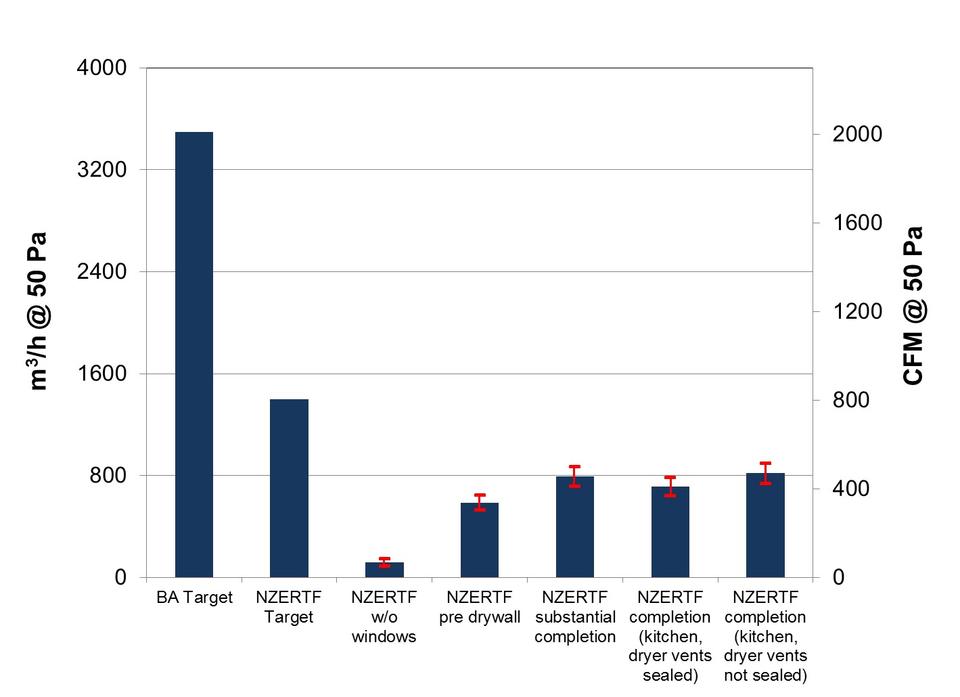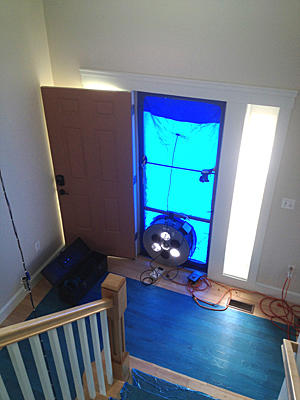Building Envelope Airtightness
A key design goal of the NZERTF is to reduce heating and cooling. One strategy for doing so is to make the building envelope as airtight as possible and then to ventilate the building using a mechanical system that exchanges heat in the winter (and cool in the summer) between the outgoing and incoming air. Great efforts were made to design and construct a tight building, but the only way to determine if a building is tight is to measure it using a fan pressurization test, sometimes referred to as a blower door test. The figure below shows the relevant airtightness targets for the house and test results to date.

The U.S. DOE Building America envelope airtightness target for the NZERTF corresponds to an airflow rate of 3432 m3/h at an indoor-outdoor pressure difference of 50 Pa (2.6 h-1 or 2011 cfm). However, the design spec for the NZERTF, based on its unique construction and workmanship, is even tighter at 1372 m3/h at 50 Pa (1.0 h-1 or 804 cfm).

In total, five blower-door tests have been performed on the NZERTF to-date. The first test was performed on 8/8/11 by Building Science Corporation as a quality control test of the construction to-date. It was performed before windows were installed and before the exterior wall construction was complete. The results were 118 m3/h at 50 Pa (0.1 h-1 or 69 cfm), which is less than 10 % of the NZERTF design spec and about 3 % of the Building America target.
The second test was performed on 12/13/11 by Building Science Corporation. It was performed with the windows installed and the exterior façade was complete, but before interior drywall was installed. The results were 575 m3/h at 50 Pa (0.5 h-1 or 337 cfm), which is less than 50 % of the NZERTF target and less than 20 % of the Building America target.
The third test was performed on 7/10/12 by Everyday Green, a local energy efficiency contractor, after the house was substantially completed. The results were 778 m3/h at 50 Pa (0.6 h-1 or 456 cfm), which is less than 60 % of the NZERTF target and less than 25 % of the Building America target.
The fourth and fifth tests were performed on 3/29/13 by NIST. The fourth one was performed with the HRV inlet and outlet, the dryer vent, and the kitchen exhaust vent sealed. The results were 700 m3/h at 50 Pa (0.6 h-1 or 410 cfm), which is about 50 % of the NZERTF target and about 20 % of the Building America target. The fifth one was performed with only the HRV inlet and outlet sealed. The results were 802 m3/h at 50 Pa (0.6 h-1 or 470 cfm), which is about 60 % of the NZERTF target and less than 25 % of the Building America target.

